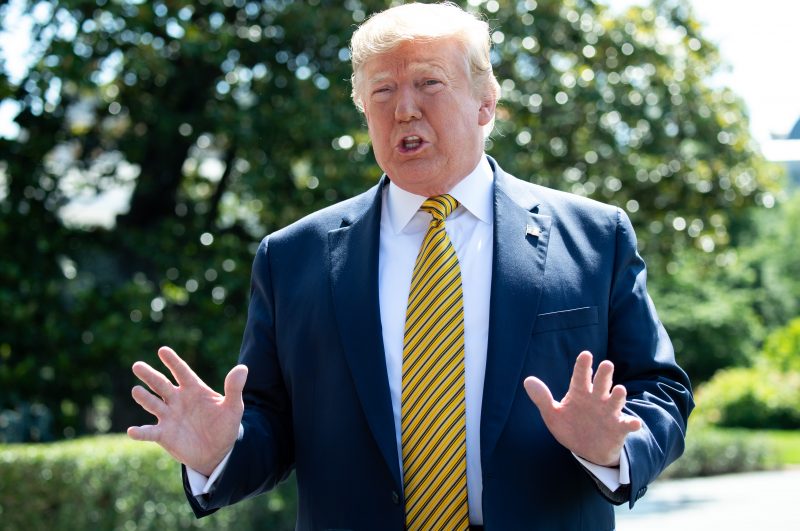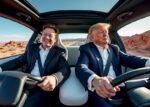Trump bashes ‘stubborn child’ Fed as economy shows signs of weakness
President Donald Trump has repeatedly attacked the US Federal Reserve — but Fed Chairman Jerome Powell has maintained that central bankers pay no attention to political pressure (SAUL LOEB)
Washington (AFP) – US President Donald Trump on Monday lashed out at the Federal Reserve, accusing the central bank of standing in the way of major economic expansion by refusing to cut interest rates.
The president’s Twitter outburst was only his latest episode of rock throwing at policymakers who are meant to be shielded from political pressure but who have contended with his barbs since last year.
However, economists say it is in fact in large part because of Trump’s own trade policies that the central bank is now considering cutting rates for the first time in a decade as the risks of recession grow.
“Despite a Federal Reserve that doesn’t know what it is doing… we are on course to have one of the best Months of June in US history,” Trump tweeted.
“Think of what it could have been if the Fed had gotten it right. (…) Now they stick, like a stubborn child, when we need rate cuts & easing, to make up for what other countries are doing against us. Blew it!”
According to Trump, if not for the Fed, the US economy would be expanding by an annual rate of four or five percent while the Dow Jones Industrial Average, a marquee of Wall Street success, would be “thousands of points higher.”
With 10 years of growth, the world’s largest economy next month will mark its longest period of expansion on record.
At the same time, it has begun to give off mixed signals.
On one hand, surveys of consumer confidence and business activity are running hot, unemployment is still near 50-year lows, and consumer spending has been strong in recent months.
But other more worrisome signs are afoot, as the boost from 2017’s tax cuts fades along with that of last year’s fiscal stimulus.
Growth in the second quarter is forecast to be about half the pace of the first, manufacturing has continued to weaken and business investment has declined.
– ‘Risk of a pronounced slowdown’ –
And Trump has threatened to jack up tariffs on another $300 billion in Chinese imports, which could send shockwaves through the global economy.
As a result, the Fed last week left benchmark US lending rates untouched for the fourth time this year and the bank is signaling it could cut soon rates exactly as Trump wants.
But, rather than aiming to unleash pent-up US economic might, a cut will be warranted if the economic outlook deteriorates, according to Fed Chairman Jerome Powell.
Persistent trade friction and slowing global growth, among other factors, had “strengthened” the case for looser monetary policy, he said.
Oxford Economics on Monday predicted the Fed will in fact cut rates three times by next year, noting that “with fiscal stimulus dissipating and global growth waning amid elevated trade tensions, the risk of a pronounced slowdown into 2020 is non-negligible.”
The specter of higher and higher tariffs has weighed on investment decisions, dented confidence and helped slow global manufacturing.
Douglas Holtz-Eakin, a Republican economist and former director of the Congressional Budget Office, told AFP the US economy has seen a sudden and unexplained bout of weakness in the first half or 2019.
“The biggest thing that’s happened in there is a whole series of tariff moves by the president,” said Holtz-Eakin. “That’s the only real policy move we’ve had.”
The United States has not seen back-to-back quarters of GDP growth greater than five percent since 1999, a time when the Fed had interest rates around five percent — or twice what they are now.
And many economists say returning to such levels is simply not in the cards, given the country’s aging population and sluggish productivity growth.
Holtz-Eakin, who publicly argued in favor of congressional Republicans’ 2017 tax cuts, doubted the Fed was blocking the breakout of growth that Trump described, describing five percent growth as “implausible.”
“When the prior administration had rates at zero percent for a decade, why didn’t the economy grow at seven percent?” he said.
“This is convenient logic but I don’t think it is grounded by anything in fact.”
Disclaimer: Validity of the above story is for 7 Days from original date of publishing. Source: AFP.


